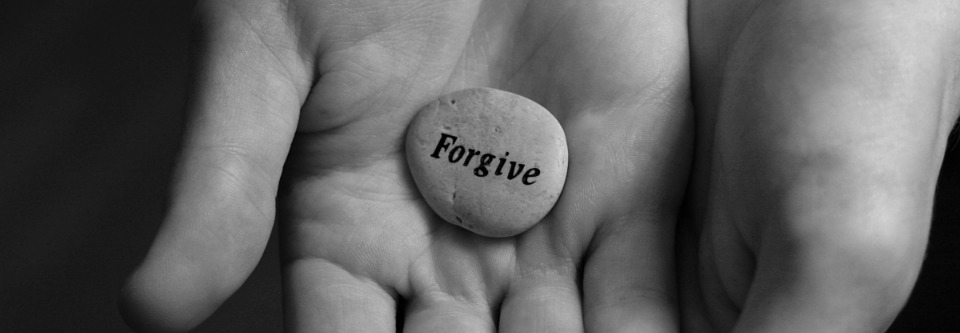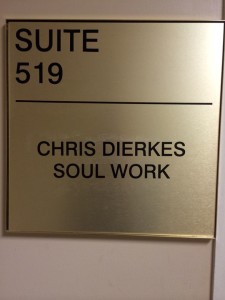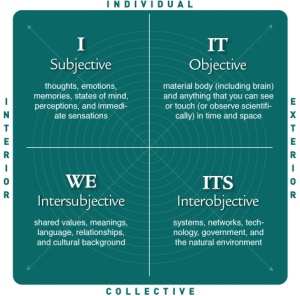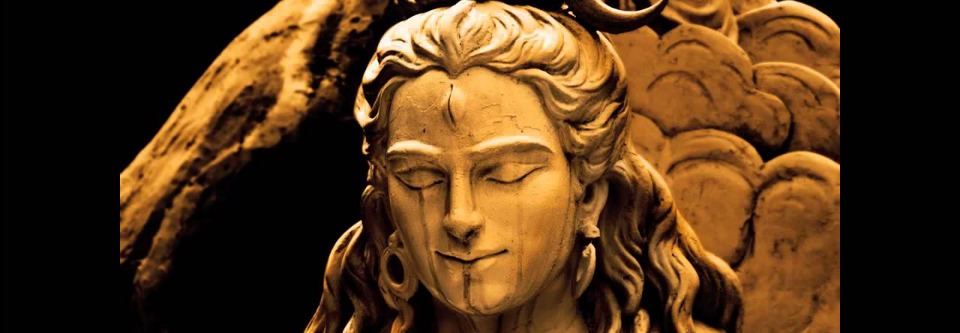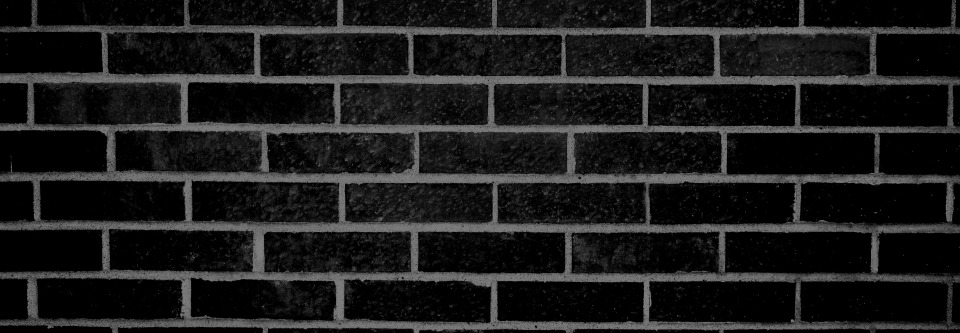Why Forgiveness Will Always Be Necessary
I’ve seen a number of pieces and threads recently-mostly through my Facebook feed-where folks are advocating that we should move beyond forgiveness. I’ve noticed a number of different variations on this argument, but most I think come down to a version of some or all of the following points of view:
In forgiveness there is judgment and judgment is wrong.
In forgiveness we continue to hold onto being right and focus on who is wrong (usually not us).
Forgiveness assumes separation. Ultimately we are all one, so who really is there to forgive or be forgiven?
Everyone is on their own path and they’re simply learning their lessons and everything is perfect.
I’ve followed the Christian path my whole life and forgiveness is at the heart of that path. The gospels tell the story of a resurrected Jesus, still showing the marks of his torture and execution. His first words are to offer peace. (These words, it should be noted, are said to a number of friends who abandoned him during his time of need.)
When his disciples asked him how to pray, Jesus said they should pray this way:
Our Father in Heaven
Holy is your name.
Your kingdom come,
Your will be done,
On earth as it is in heaven.
Give us this day our daily bread.
Forgive us our sins,
as we forgive those who sin against us.
Save us from the time of trial,
And deliver us from evil.
The logic of the prayer is clear. First we acknowledge the holiness of The Divine. Then we pray that the reality of heaven would be true of earth. And how would we recognize that heaven is true on earth? Well, according to Jesus, two things above all would reveal this heavenly kingdom on earth. One: Everyone would have enough to eat (“give us this day our daily bread”). Two: People would practice mutual forgiveness (“forgive us our sins as we we forgive those who sin against us”).
So hearing the idea that we need to move past forgiveness, is for me, the same as hearing that we should move beyond caring to feed hungry people (or for that matter that we should move beyond needing to eat!). I think Jesus’ teaching on forgiveness has something to say to all of us regardless of path or affiliation. I think it teaches us something crucial about our human condition.
In what follows then I’m going to share some personal stories that I hope will persuade you of the enduring necessity and value of forgiveness, rightly understood and practiced. A heads up to you dear reader: some of these stories are pretty rough.
The first story takes place when I was in 7th grade. That year a new student came to school. He and I were the two shortest boys in our class. He made friends with another student, previously a friend of mine, and together they began to bully me. The bullying was verbal and emotional (not physical) in nature. I realize now that he was simply applying basic prison rules: beat somebody up on the first day or become someone’s bitch. He choose the former. The two of them would humiliate me on a regular basis. I had every one of my classes with them and then when school was over we played on the same sports teams where the taunting and humiliation would continue.
Since we went to private school they knew they couldn’t physically assault me or they’d be expelled. The logic of the bullying was quite transparent: to keep pushing me to the point where I would break. They hoped I would snap and take a swing at one of them. The other kid (my erstwhile friend) was really skilled in martial arts. So if I ever had totally lost my cool and went after them, they would have scored a double victory. One, they would have most certainly beat the living shit out of me. And two, I would have been expelled from school.
Prior to the bullying I was a very lighthearted and easygoing boy. After the bullying I became more sullen and withdrawn. I tried to put on a good face and not show they were getting to me, but that wasn’t very successful. I just mostly tried to keep my head down, stay quiet, and hope the abuse would end.
Eventually we moved onto different schools and the bullying stopped and mercifully I was never bullied again. Sadly the effects of the bullying lasted much longer.
Somewhere during my late teens, I began to have recurring dreams involving my bullies. At first they were nightmares with my two persecutors tormenting me in the dreamworld. They’d be chasing me and I would wake in a cold sweat. After awhile I began to be able to turn around and face them down in the dream (something I didn’t feel equipped to do in waking life).
Eventually I found I could overpower them in the dream. And this where things take an even darker turn. I experimented in these dreams with returning evil for evil. I gave free rein to my feelings for revenge which were always just beneath the surface. I began to dream of hurting them like they hurt me. The darkest dreams were ones in which I would torture them, e.g. slowly cutting out their tongues (obviously symbolizing the desire to stop them from hurting me with their words). I would take real pleasure from inflicting cruel pain upon them. The most horrific versions involved me murdering them in front of their families.
Now I’m not sharing this to reveal that I’m secretly a psychopath or that I had actually worked out plans to kill my bullies in real life. I certainly didn’t. I share it because many years later, for more than a decade actually, I had these dreams on a sporadic basis.
I had to come to terms with a couple of facts. First, it was completely natural to feel the desire for revenge. It was a totally normal human response, entirely understandable given the circumstances. I wasn’t an evil person for having these feelings. Second, regardless of how normal such feelings were, they were eating up me from the inside. They were like an acid burning up parts of my soul.
I returned to the teachings of Jesus who said:
“If you forgive the sins of any, they are forgiven.
If you retain the sins of any, they are retained.”
I realized I was quite literally retaining their sins. Their sin had left this desire for revenge within me and it was a poison. It was a lingering form of the bullying. It felt like they were still bullying me long after it had factually ceased, as if they had injected a virus within that was slowly crippling me.
I had worked to feel compassion for my bullies for some years. I could remember that their home lives weren’t the happiest. It was not hard to think that they didn’t fully understand the ramifications of their actions. “Kids can be cruel” as the saying goes. I could imagine that if I felt this badly, they must have been really hurting even more deeply on their insides.
These responses softened me for sure, but the poison was retained in Jesus’ words. I still wanted revenge.
It was then, following Jesus’ instruction, that I realized forgiveness was a liberating act. It was the only antidote to the poison of revenge. They didn’t ask for my forgiveness (fortunately I never had to interact with them again). I forgave them anyway.
And then the dreams stopped. The desire for revenge was gone. There’s still hurt to be sure and compassion towards them. What was done was and is still wrong. In a just world, the adults in this situation would have created a context which would have minimized bullying and when it did occur be dealt with in an appropriate manner. I don’t want my talk of forgiveness to be interpreted as support for kids (or adults) to be bullied or abused because, “Jesus accepted suffering and he forgave people, so you should too.” That would be a gross abuse of Jesus’ teaching on forgiveness.
Forgiveness made sense in this case because I was out of the immediate harming environment. I’m not burdened any longer with the poison of revenge. Forgiveness was for me a grace.
The second story requires a little bit of personal background. I was adopted as a baby. I always knew I was adopted growing up. Since I’m white and my parents are white it wasn’t obvious to others that I was adopted. I could tell or not tell people as I pleased.
As is common with adoptees, in my early twenties I decided to do some searching and see if could learn more about my biological parents. My adoption was closed, which meant that the adoption agency was able to offer me a basic storyline of my birth, redacted of any potentially personally-identifying information. So at about 23 or so I learned the basic story of my birth.
My biological mother and father met in their first year of university. She became pregnant and he promptly ended the relationship, leaving her with me. She decided to complete the pregnancy but felt (probably rightly) that she was unready to be a mother, so she decided I should be adopted. My biological mother had left me a note that the adoption agency had kept for more than 20 years in case I ever asked to see my file. The note explained to me why she gave me up for adoption. While I felt a lot of sadness and grief, I never felt any hatred towards my biological mother. I figured she did the best that she could do under the circumstances. I tried to contact and meet her a few years later, which she declined to do. Again I was sad and deeply hurt by that decision, but I understood it, even if I didn’t agree.
But my biological father – that’s a very different story. I had never had any interest in contacting or meeting him. Honestly I really only ever felt loathing towards the man, sometimes more low-level, sometimes more intense. My dad (i.e. my adopted father) is a loving man who has taken great interest and appreciation in my sister and I. My dad’s always represented to me what fatherhood is really about–he’s who I model myself after as a new father. My biological father had always seemed to me the opposite of that–selfish and cowardly for abandoning a mother and child, for not owning up to his actions.
Only in the last year or so did I realize that I was yet again retaining the sin of another. I was holding a kind of sneering revulsion towards the man. I didn’t want revenge but I definitely didn’t wish him well. It was subtler than the bullying. I didn’t have dreams about hurting him. Still, it was similar in that it was eating away at some vital part of me.
As with the first case, I had previously practiced an empathic attempt to walk in his shoes. How would I have handled at 18 or 19 years old the news that I had impregnated a woman? My wife and I thought once we had gotten pregnant when we were both still in school. I was 26 or so at the time and I freaked the hell out. And I had seven or eight years on my biological father at the time. So yes I could most definitely feel compassion while at the same time recognizing that he could have and should have made better choices. There’s no excuse for what he did, however difficult a situation it must have clearly been for him.
Nevertheless I was holding an energy that was not wishing the best for him. I forgave him, even though he never asked for it, and again I felt a deep release.
The third story I want to share comes from my years of being a priest. In my time I heard many confessions. People came to me to share deep pains and to lay bare before another (confidentially) actions that haunt and shame them, hoping they would find mercy. (In my work now I also hear stories of deep pain and loss.Though not formally confessions the practical import is essentially the same).
I heard stories of true tragedy. And they weren’t the first I had heard either. Earlier in my studies to be a priest, I worked as a chaplain on the men’s maximum security wing of jail in Detroit. Needless to say I’ve heard truly God awful things–particularly the kinds of pain that drove many of these men to do destructive things.
I heard the horror of addiction and the cruelty of a society that responds neither compassionately nor wisely to such pain. Stealing money from a demented grandmother out of her nursing home to get a fix, missing the death and funeral of a parent because they were on a bender, victims who became the perpetrators and victimized others. On and on the litanies could go.
When the story was complete then I would tell these individuals that my deep and abiding belief is that God (or Spirit or Higher Power or The Universe or whatever term one might prefer) is unconditionally merciful. That God always forgives those who are sincerely sorry for what they have done and for what they have failed to do. I would say that God is not an angry tyrant ready to punish them for their evildoing. God, for me, is the Face of Infinite Love. Admittedly, it can be painful for the parts or us we don’t want to have loved or healed to be looked upon by Pure Love. Still Unconditional Love means exactly that–Uncondtional. No conditions, no strings attached.
And then I would see years of self-recrimination, punishment, and hatred begin to melt away. For many of these folks I wondered if any person in their lives had ever told them they were lovable, that they were beings of infinite dignity. I felt it was my role to simply witness to the truth I believe, namely that all of us are made in the image and likeness of The Divine. Our unloving choices may create a kind of layer of crud or dirt over our true nature but they can never completely destroy that nature. None of us, I believe, are ever beyond redemption. We are always offered the invitation to be forgiven and loved. (And yes I do believe even the Adolf Hitlers of the world are offered the possibility of forgiveness. Whether they accept it or not is a separate question which I don’t think we can ever know.)
I’m not in a position to speak on behalf of those whose stories I heard. I would just say from my position as the listener, I think the loss of forgiveness would be unspeakably detrimental.
The last piece I can only briefly mention is the role of forgiveness in social sin, i.e. social forms of violence and injustice. In Canada, where I live, the government created a policy of taking aboriginal children away from their families, placing them in residential schools in an attempt to assimilate them to Western culture. They were forced to cut their hair (short) like Westerners and only speak English. Children in these schools were physically, sexually, and emotionally abused, were experimented upon, and died of poor health. My own church, the Anglican Church of Canada, along with a number of other churches, ran a number of these schools for the government. They were actively complicit in the evil.
In the US context, we might think of the genocide of native peoples, as well as the history of slavery and Jim Crow and how those still create pain, division, and injustice to this day. How they affect every person living as part of this land, whether we want to admit the fact or not. In the world context, sadly fill in the blank of a local genocide, ethnic prejudice, imperialist oppression.
Twenty years ago, Archbishop Michael Peers offered a public apology to aboriginal leaders for the Anglican Church of Canada’s role in the systematic evil and injustice of the residential schools. You can read his apology here. It’s an incredibly moving statement. What’s more incredible is that those who heard it forgave him and those he apologized on behalf of. As Archbishop Peers correctly states in his apology, asking for forgiveness is a good and holy beginning but it will be an empty gesture if there are not corresponding actions to build a different future. Sadly, there’s plenty of work on that front still to do.
Well-meaning and self-identified nice, polite white Canadians by and large simply don’t know or don’t care to know about this history. If they really took it in, their image as more liberal and enlightened than their supposedly backward conservative American cousins south-of-the-border would crumble. They might learn that when South African whites in the early 20th century were doing some studies that eventually led to apartheid, a primary model was the Canadian Residential School System.
Speaking of South Africa….In post-apartheid South Africa, they formed a Truth and Reconciliation Commission, a model that’s been replicated elsewhere. As Archbishop Desmond Tutu emphasizes, it’s Truth and Reconciliation. Truth needs to be told, truth about what was done. Those who were hurt have to tell their stories. Those who either actively participated in the wrong, or turned a blind eye to it, and even those who did not commit any wrongdoing but benefit (say economically or culturally) from the wrong have to hear those stories. The second half of that dyad is Reconciliation. It’s not revenge that’s sought but rather to see each other, across ethnic or religious or economic or historical divides and pains, as members of the same human family, and together walking the path of healing and wholeness and build a better future.
No forgiveness without truth telling. No forgiveness means no hope of reconciliation, justice or peace. Though again by itself forgiveness is only a beginning step–questions of concrete and systematic restitution for the economic, social, and political losses endured by oppressed peoples remains (this is true of South Africa as well as essentially the entire globe). So while Forgiveness is always necessary, it is not by itself the final answer.
Now I suppose it could be argued that I’ve stacked the deck in this piece. Abandonment by a father, bullying, colonialism, addictions–isn’t that all rather extreme? Haven’t I been rather heavy handed in my critique of the current forgiveness-questioning? My response to that would be to ask are these examples really all that extreme? Either you or someone close to you has been sexually or physically or mentally or emotionally violated (or all of them). Either you or someone you love is struggling with a serious addiction issue. All of us are feeling the deep effects of the history and contemporary reality of human injustice and our cruelty towards each other and our disconnection from the earth. I contend these are not extreme examples but rather common examples that we go to extreme measures to try to avoid.
For these and many others, we will always need forgiveness. Forgiveness is by no means a panacea. It is however one process we will always require and any spiritual teaching that suggests otherwise needs to seriously consider these and similar such stories. Any spiritual teaching that suggests we need to transcend forgiveness is not offering transcendence but the disease of spiritual bypassing.
In that light, I’d like to bring us back to that list of criticisms of forgiveness and re-examine them in light of these stories.
In forgiveness there is judgment and judgment is wrong.
In forgiveness we continue to hold onto being right and focus on who is wrong (usually not us).
Forgiveness assumes separation. Ultimately we are all one, so who really is there to forgive or be forgiven?
Everyone is on their own path and they’re simply learning their lessons and everything is perfect.
Response to #1:
Yes, forgiveness does involve judgment. But no, judgment isn’t always wrong. There’s healthy judgment and unhealthy judgment. The judgment here is about actions and choices, not about humans. It’s about which ways of living are life-giving and which are death-dealing. In fact, I argue we should be more judgmental, not less. Being more judgmental goes with being more forgiving and vice versa.
Response to #2
When we properly follow through with forgiveness, this idea that we’ll be stuck in who’s right and who’s wrong isn’t my experience either personally or working with others going through a forgiveness process. In my experience forgiveness asks us to be able to enter and sit with the pain, anger, hurt, sorrow, grief, and remorse that underlie our brokenness and fragility as human beings. It calls a deep tenderness and vulnerability forth.
Response to #3
Two responses to this one. First, yes it’s true that we’re all one. Therefore we all deserve to be treated with respect and dignity and to treat others in return the same way. When respect and dignity are denied, then the Oneness that we share is also being fundamentally denied. Second, we’re all One precisely in and through being diverse expressions of The One. We’re all One and we’re all distinct. Proper practice of forgiveness recognizes and validates both sides of that paradox, whereas sayings about how we’re (only) all one do not.
Response to #4
Yes, we’re all on our own paths. We are again united in our diversity. Our paths intersect at many points and forgiveness upholds the everlasting value of ethics–of making sure those intersections are loving, just, and affirming ones. Yes, we are all learning (hopefully). Making right choices is not always easy. We live in a very grey world and there’s a deep ambivalence to all our ethical choices. No one is in a place of supreme righteousness. We’re all prone to errors and choices that cause ourselves and others pain. For me, that’s precisely why we have forgiveness. It’s an empowering act. It connects us to the Unconditional Love and Mercy of The Divine.
But what about teachings that speak of the perfection of each and every moment? Doesn’t forgiveness undercut that teaching?
Here again I would say that I believe the teaching of Jesus serves us well. Sometimes Jesus spoke of the Kingdom of God (or the Kingdom of Heaven on Earth) as already present. Other times he referred to the Kingdom as yet to come (re-read the Our Father prayer where both ways of speaking occur). Christian theologians summarize Jesus’ teaching as saying: The Kingdom is Already but Not Yet.
In other words, in its essence, in its fundamental nature, everything and everyone is perfect (already). However in its expression, its manifestation, things are not perfect (but not yet). In fact they are far from perfect. In truth, the world we live in is an utter shitstorm of pain, degradation, and appalling, unconscionable violence, cruelty, and injustice. There’s always beauty, goodness, and kindness in the midst of that truth, but any spiritual teaching worth anything has to make us more aware, not less.
Forgiveness, done properly, is an act that unites both the already but the not yet. It partakes of the Eternity of Perfection while recognizing that Perfection needs to be not only the essential nature of all but its concrete expression as well. It heals the tears that come from Perfection not being upheld.
–
Forgive us our sins,
as we forgive those who sin against us.

